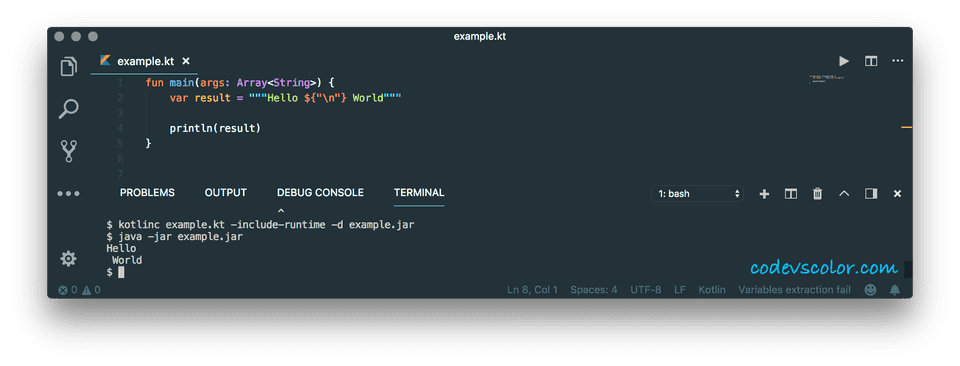
 Convenience: The listOf() function is a simple and convenient way to create lists of elements in Kotlin. This can help prevent errors caused by passing the wrong type of data to a function or method. Type safety: Since Kotlin is a statically typed language, the listOf() function provides type safety by ensuring that all elements of the list are of the same type. This makes it easier to reason about the behavior of your code and can help prevent bugs caused by unintended changes to the list. Immutability: The listOf() function creates an immutable list, which means that the contents of the list cannot be modified once it has been created. Here are some advantages and disadvantages of using the listOf() function in Kotlin: ISRO CS Syllabus for Scientist/Engineer Exam. ISRO CS Original Papers and Official Keys. GATE CS Original Papers and Official Keys. DevOps Engineering - Planning to Production. Python Backend Development with Django(Live). Android App Development with Kotlin(Live). Full Stack Development with React & Node JS(Live). Java Programming - Beginner to Advanced. Data Structure & Algorithm-Self Paced(C++/JAVA). Data Structures & Algorithms in JavaScript. Data Structure & Algorithm Classes (Live).
Convenience: The listOf() function is a simple and convenient way to create lists of elements in Kotlin. This can help prevent errors caused by passing the wrong type of data to a function or method. Type safety: Since Kotlin is a statically typed language, the listOf() function provides type safety by ensuring that all elements of the list are of the same type. This makes it easier to reason about the behavior of your code and can help prevent bugs caused by unintended changes to the list. Immutability: The listOf() function creates an immutable list, which means that the contents of the list cannot be modified once it has been created. Here are some advantages and disadvantages of using the listOf() function in Kotlin: ISRO CS Syllabus for Scientist/Engineer Exam. ISRO CS Original Papers and Official Keys. GATE CS Original Papers and Official Keys. DevOps Engineering - Planning to Production. Python Backend Development with Django(Live). Android App Development with Kotlin(Live). Full Stack Development with React & Node JS(Live). Java Programming - Beginner to Advanced. Data Structure & Algorithm-Self Paced(C++/JAVA). Data Structures & Algorithms in JavaScript. Data Structure & Algorithm Classes (Live). 
And obviously there is a function findLast () to return the last found element.įirst(), firstOrNull(), last(), lastOrNull() and component1–5() return exact elements from the collection. There is a really simple realization inside this function: public inline fun Iterable.forEachIndexed(action: (index: Int, T) -> Unit): Unit įind() returns you the first found element.

The most common operation when you work with collections is iteration through collection items for (int i = 0 i friend.id = index Let’s check all important functions that we have in the llection framework and compare it to an implementation to Java. But if we compare it to Rx, there are no subscribers, observers, etc. So the idea is that you have some stream of data, and using some functions you can receive some required state of the stream. This approach is very similar to Java 8 collections and Rx usage. Now I am going to show you the coolest thing in Kotlin collections – the functional approach Kotlin provides on top of collections. Software Engineer Android the two previous articles we talked about collections structure and all the possible ways to create them.







 0 kommentar(er)
0 kommentar(er)
